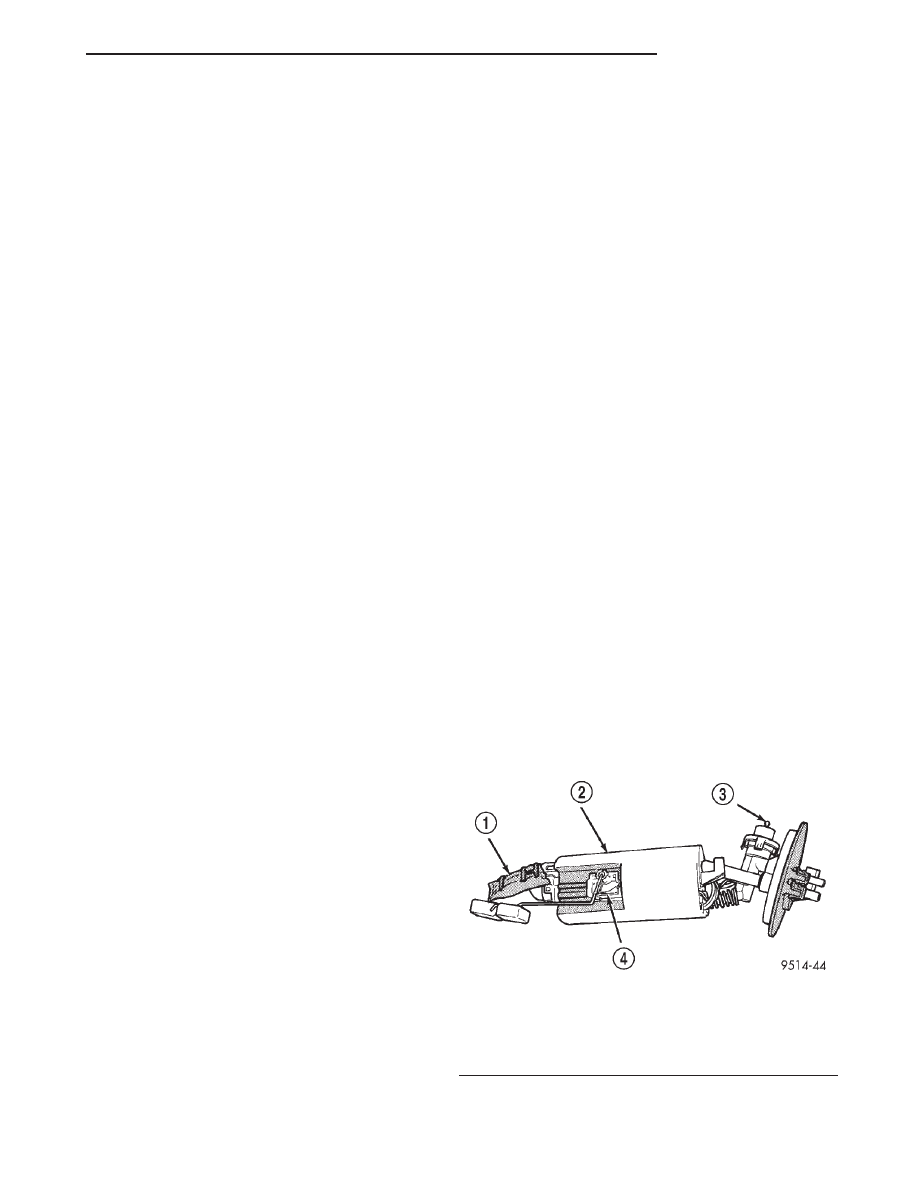Chrysler Stratus Convertible. Manual - part 11

(Methyl Tertiary Butyl Ether) and ETBE (Ethyl Ter-
tiary Butyl Ether). Oxygenates are required in some
areas of the country during winter months to reduce
carbon monoxide emissions. The type and amount of
oxygenate used in the blend is important.
The following are generally used in gasoline
blends:
Ethanol - (Ethyl or Grain Alcohol) properly
blended, is used as a mixture of 10 percent ethanol
and 90 percent gasoline. Gasoline blended with etha-
nol may be used in your vehicle.
MTBE/ETBE - Gasoline and MTBE (Methyl Ter-
tiary Butyl Ether) blends are a mixture of unleaded
gasoline and up to 15 percent MTBE. Gasoline and
ETBE (Ethyl Tertiary Butyl Ether) are blends of gas-
oline and up to 17 percent ETBE. Gasoline blended
with MTBE or ETBE may be used in your vehicle.
Methanol - Methanol (Methyl or Wood Alcohol) is
used in a variety of concentrations blended with
unleaded gasoline. You may encounter fuels contain-
ing 3 percent or more methanol along with other
alcohols called cosolvents.
DO
NOT
USE
GASOLINE
CONTAINING
METHANOL.
Use of methanol/gasoline blends may result in
starting and driveability problems and damage criti-
cal fuel system components.
Problems that are the result of using methanol/
gasoline blends are not the responsibility of Chrysler
Corporation and may not be covered by the vehicle
warranty.
Reformulated Gasoline
Many areas of the country are requiring the use of
cleaner-burning fuel referred to as Reformulated
Gasoline.
Reformulated
gasoline
are
specially
blended to reduce vehicle emissions and improve air
quality.
Chrysler Corporation strongly supports the use of
reformulated gasoline whenever available. Although
your vehicle was designed to provide optimum perfor-
mance and lowest emissions operating on high qual-
ity unleaded gasoline, it will perform equally well
and produce even lower emissions when operating on
reformulated gasoline.
Materials Added to Fuel
Indiscriminate use of fuel system cleaning agents
should be avoided. Many of these materials intended
for gum and varnish removal may contain active sol-
vents of similar ingredients that can be harmful to
fuel system gasket and diaphragm materials.
FUEL DELIVERY SYSTEM
DESCRIPTION
The front wheel drive car uses a plastic fuel tank
located rear center of the vehicle.
The in-tank fuel pump module contains the fuel
pump and pressure regulator. The pump is serviced
as part of the fuel pump module. Refer to Fuel Pump
Module.
The fuel delivery system consists of:
• the fuel pump module containing the electric
fuel pump, fuel filter/fuel pressure regulator, fuel
gauge sending unit (fuel level sensor) and a separate
fuel filter located at bottom of pump module
• Fuel tubes/lines/hoses
• Quick-connect fittings
• Fuel injector rail
• Fuel injectors
• Fuel tank
• Fuel tank filler/vent tube assembly
• Fuel tank filler tube cap
The fuel delivery system contains a replaceable in-
line filter. The filter attaches to the frame above the
rear of the fuel tank.
OPERATION
A returnless fuel system is used on all vehicles.
Fuel is returned through the fuel pump module and
back to the fuel tank. A separate fuel return line
from the tank to the engine is no longer used.
Relieve fuel system pressure before servicing fuel
system components. Refer to the Fuel System Pres-
sure Release Procedure and follow all Cautions and
Warnings. Most fuel system components attach to the
fuel lines with quick connect fittings. Refer to Quick
Connect Fittings in this section.
FUEL PUMP MODULE
DESCRIPTION
The fuel pump module is installed in the top of the
fuel tank (Fig. 1).
The fuel pump module contains the following:
Fig. 1 Fuel Pump Module
1 – INLET STRAINER
2 – FUEL RESERVOIR
3 – FUEL PRESSURE REGULATOR
4 – FUEL LEVEL SENSOR
JX
FUEL SYSTEM
14 - 3
DESCRIPTION AND OPERATION (Continued)